jamesp
Cave Dweller 
Member since October 2012
Posts: 36,606
|
Post by jamesp on Jun 7, 2014 0:03:52 GMT -5
Advanced behavior mentioned above is not well documented here. Great to know about native behavior just for the reason of comparison to modern man. Apparently a game was played with an object called a discus or a game stone. Usually of ground white quartz thought to be for visibility reasons. I have found 3-4 of them. Let me post a couple of images of nicer ones from images. It has been a while since studying them.  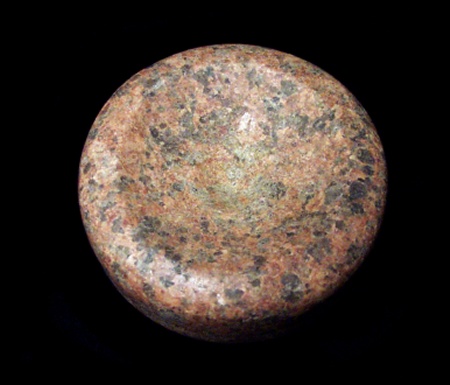 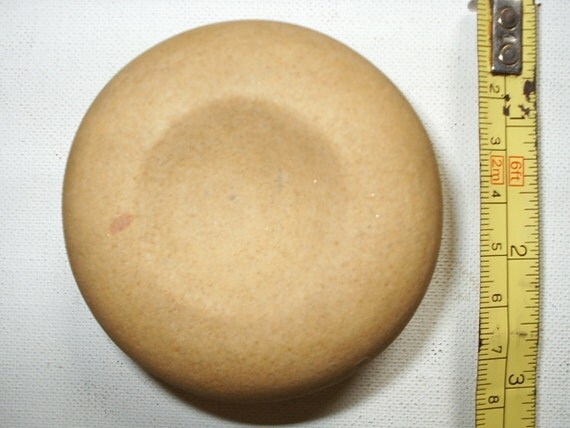 |
|
|
|
Post by mohs on Jun 7, 2014 0:33:28 GMT -5
well those are dam amazing James
sure they weren't made to hold Hohokam balls ?
maybe that didn't come out right
mostly
|
|
gemfeller
Cave Dweller 
Member since June 2011
Posts: 4,059 
|
Post by gemfeller on Jun 7, 2014 0:41:31 GMT -5
|
|
gemfeller
Cave Dweller 
Member since June 2011
Posts: 4,059 
|
Post by gemfeller on Jun 7, 2014 0:43:52 GMT -5
well those are dam amazing James sure they weren't made to hold Hohokam balls ? maybe that didn't come out right mostly Ed, I think you're referring to "teabagging." It requires stones but not the mineral kind. |
|
jamesp
Cave Dweller 
Member since October 2012
Posts: 36,606
|
Post by jamesp on Jun 7, 2014 8:20:00 GMT -5
I figured you 2 would appreciate the lapidary quality being the masters that you are. The chunky stones are works of lapidary art. A lot of theory about their function. Looks like your links have clarified the 'theory' Rick. Great reads, and very comparable. They are a part of our native history in these parts. Here is my best find of white quartz 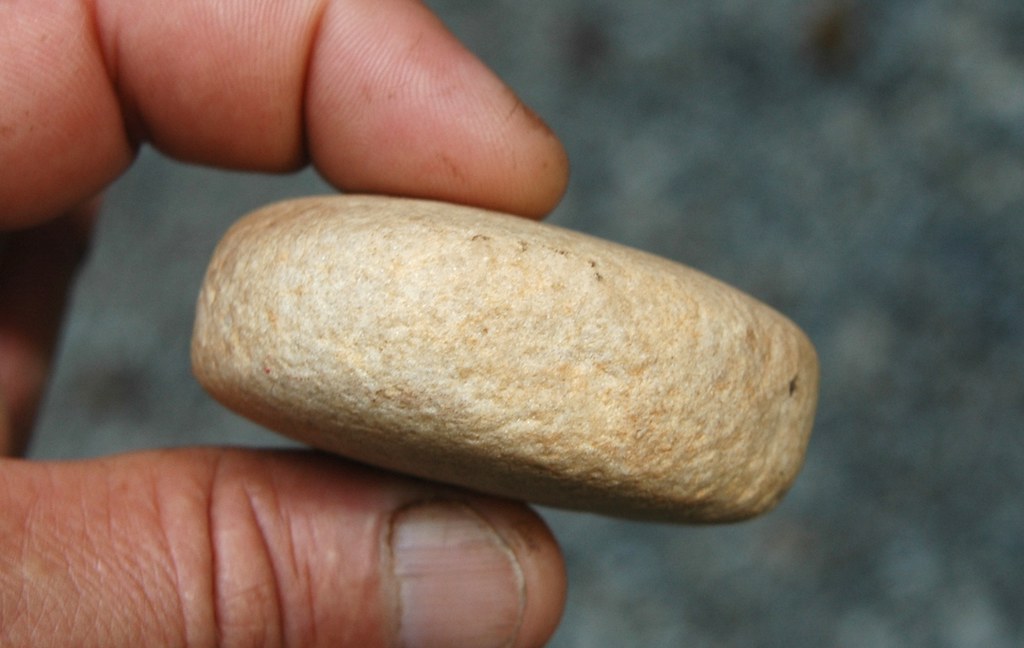 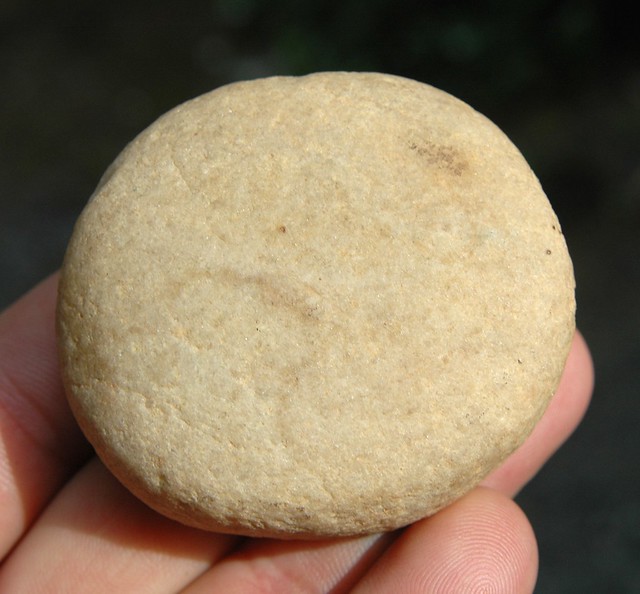 |
|
|
|
Post by mohs on Jun 7, 2014 11:00:55 GMT -5
James: those are amazing finds. So well formed.
Did they find them in burials?
The reason I ask is that in Hohokam burials
stone palettes were found. These palettes
resemble your games stones to an extent.
Except the palettes were shallow polish stone that was rectangular shape
They looked like a painters pallet?
There use is a mystery. Maybe they were used as mirror?
Not sure.
Later I’ll post some pictures from the museum.
Unfortunately I never found one.
Although there were lots discovered.
I need to keep my eyes open more.
Rock hounding was never my strong
Rick: I got a little goofy last night and
except for a bit of foggy head this morning,
I’m fine now. Those link help verify many of my notions.
It’s amazing. Every time I look into the Hohokam tradition
I unearth new information.
I think the Pueblo Grande Museum, on the surface,
presents information that’s a little smooth around the edges.
Well… they have to make the information palatable for the tourist traffic.
So their displays can be a bit misleading. Not out right misleading!
The information is there. It just a bit smoothed over from the raw archeological facts.
One can only wonder what made a certain tribe leave the Central American area;
migrate north to become the Hohokams?
I’ve read many accounts of rubberize balls being found.
Most likely the games were played with a rubber ball -- not a stone sphere—
acquired by trade with Mesoamerican.
But maybe, there was rubber shortage and they resorted to stone spheres?
Innovation in those days.
Another important aspect is that I hadn’t realized that cliff dwellers built ball courts.
Plus the whole mystery of what occurred -
when the ball court building declined and mounds started to rise?
I’m headed out to Rockazona now. I’ll keep my eyes open
|
|
|
|
Post by mohs on Jun 9, 2014 1:37:45 GMT -5
This display shows the palette’s lower left 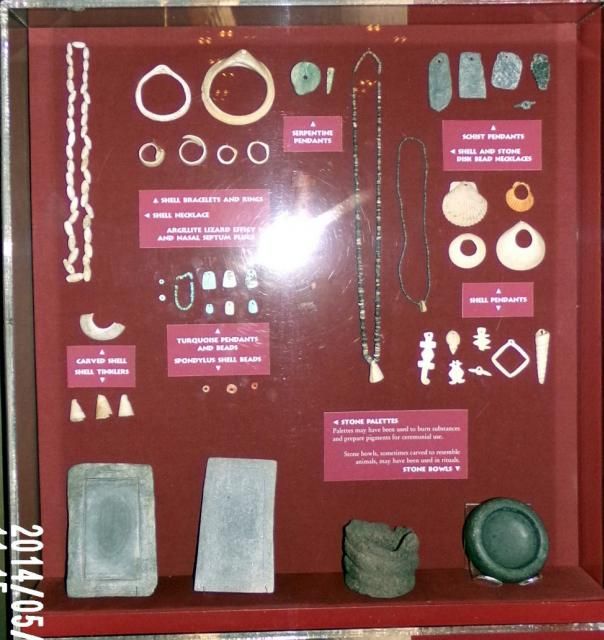 why they would find these items in burials remains mysterious |
|
gemfeller
Cave Dweller 
Member since June 2011
Posts: 4,059 
|
Post by gemfeller on Jun 9, 2014 10:57:41 GMT -5
Ed, without seeing the palettes up close and personal it's hard for me to even have a theory about their use. The Olmecs and other Mesoamerican cultures were deeply fond of mirrors and saw their reflections as portals to another realm. They could see it but not interact with it. I ran across a reference that might possibly hold clues to the Hohokam palettes:
Early mirrors were fashioned from single pieces of iron ore, polished to produce a highly reflective surface. By the [Olmec] Classic period, mosaic mirrors were being produced from a variety of ores, allowing for the construction of larger mirrors. Mosaic pyrite mirrors were crafted across large parts of Mesoamerica in the Classic period, particularly at Teotihuacan and throughout the Maya region.
*Pyrite degrades with time to leave little more than a stain on the mirror back by the time it is excavated. This has led to the frequent misidentification of pyrite mirror backs as paint palettes, painted discs or pot lids.* By the Postclassic period obsidian mirrors became increasingly common.
There's no question in my mind that there was a lot of interaction and trade between Mesoamerica and the American southwest cultures. At that time they were probably considered to be essentially the same group. In order for us to begin to understand them we have to set aside our own view of the world and enter their naturalistic realm. There, every animal and natural event, from wind to fire, was considered mystical and divine. It sort've relates to Greek and Roman gods who personified natural forces and events like Posiedon (ocean), Dionysus (wine), Hestia ( maiden goddess of the hearth who presided over the baking of bread, mankind's staple food) etc. At least that's my layman's "take" on it.
|
|
|
|
Post by mohs on Jun 10, 2014 14:54:42 GMT -5
Thanks Rick
They are unusual
mirrors use would be way useful
like a compact mirror
or perhaps,
they were used for burning incense
& used in some sort of ritual ?
Being found in burials
really intensifies the mystery
|
|
|
|
Post by mohs on Jun 10, 2014 14:56:34 GMT -5
and the drilling of the holes
for pendants is another trick
|
|
bentiron
noticing nice landscape pebbles
 
Member since September 2011
Posts: 85
|
Post by bentiron on Jun 10, 2014 18:17:51 GMT -5
There was a lot of trade between Central Arizona and Central Mexico and further south as evidenced by the number of parrot burials, not disartulated but whole birds possibly traded north for the use of their feathers and as pets. Some turkeys were also buried whole, here again the thought being used for repeated plucking of feathers for use in ceremonial clothing. Trade with Mexico extended as far north as the Chaco Canyon area.
|
|
gemfeller
Cave Dweller 
Member since June 2011
Posts: 4,059 
|
Post by gemfeller on Jun 10, 2014 19:30:23 GMT -5
|
|
|
|
Post by mohs on Jun 10, 2014 20:23:34 GMT -5
interesting links Rick check this out  the first grooved pendant an ancestor of @adrian no doubt adrian65 Hi Adrian! not sure you saw this reference from long ago nonetheless I just wanted to say hi every time I think about RTH your one of the first that come to mind hope all as well as can be for all there Ed |
|
|
|
Post by mohs on Jun 10, 2014 20:31:11 GMT -5
 and w/ scalloped edge incredible & crafty could learn few things about rocks from the Hohokam  |
|
gemfeller
Cave Dweller 
Member since June 2011
Posts: 4,059 
|
Post by gemfeller on Jun 10, 2014 21:12:39 GMT -5
Ed,
In terms of applied technology the Amerinds were essentially stone-age people. I don't mean that in any disrespectful way, but they didn't generally use metals and relied on stone arrowheads, axes and spear points. I've always said stone age folks knew a lot more about rocks and how to use them than we do. They used them for everything from abrasives to grinding, tool-and-pyramid-making etc. Heck, we "advanced" folks still haven't figured out how they moved and elevated rocks weighing multiple tons.
|
|
|
|
Post by mohs on Jun 10, 2014 22:12:46 GMT -5
which rounds me back to my question of
why didn't they work metal ?
why didn't they ever have a bronze age?
which begs another question
why didn't they ever go sea faring?
|
|
gemfeller
Cave Dweller 
Member since June 2011
Posts: 4,059 
|
Post by gemfeller on Jun 11, 2014 0:01:39 GMT -5
Re: working metal. To be trite, necessity is the mother of invention. I guess if your present technology is sufficient to put groceries on the table and protect you from regular enemies, there's no need to bother with new stuff. Unfortunately that didn't work out well when they encountered that ancient Chinese invention, gunpowder. Hi-tech and low-tech societies don't mix well.
The Mayans made children's toys with wheels but didn't use wheeled carts or conveyances. The dense rainforests surrounding their city-states probably made them impractical for many uses but it's still odd they didn't use wheelbarrows or wagons in settled areas. Maybe that required too much "thinking outside the box" for their cultural norms. They were brilliant astronomers and mathematicians. Go figure.
As for seafaring I happen to currently live near the California Pacific coast where the Chumash held sway. On the rocks in the Santa Monica Mountains above my house there are several wonderful pictograms of their sturdy ocean-going boats that held many people. I got to wondering why they were so different than other tribes in the region. Then it hit me: Polynesians! As it happens, that bit of insight is now supported by some archaeologists who have published learned papers on that theory.
|
|
|
|
Post by mohs on Jun 11, 2014 19:12:32 GMT -5
Howdy Rick !
It seem like everybody discovered America before Columbus
So many -- that maybe Columbus is the myth
Phoenicians-where else did they get the gold for Solomon?
Egyptians - how else did the Aztec's learn to build brick temples?
The Israelites-the 12 tribes went somewhere
Filipino-- on reed rafts
Persians --to escape Alexander
Chinese- and they many cheap goods
Vikings-- because they got around
One thing I think we can all agree on
Alexander the Great never did come to America
He would have been sure to bring horses
Heck chickens too
The guy went all out when he traveled
mohs
|
|
jamesp
Cave Dweller 
Member since October 2012
Posts: 36,606
|
Post by jamesp on Jun 11, 2014 21:46:46 GMT -5
Around Atlanta milk quartz was the stone of choice for arrowheads. It about has to be struck perfectly to make thin chips.
When they are found, they mean a lot to me as I know pretty much for sure that the early guys were doing their lapidary thing.
There is very few hill tops around here that is void of these chips. some hill tops are thick w/them. Gives a unique feeling
that different places have more activity. Captivates me as to why some places have more activity than others. Makes me study
the topography and water supply. And still amazes me the amount of old homesites that are placed where these chips are found.
Finding a skillfully made artifact is cool, but to me it is no different than finding a chip. The fact that that guy was sharing ground
with me kinda raises the hair. Was he cold what was he wearing where was his mate/kids/buddies what was he doing/eating what did
he sleep on is he 30 and worn out, or 80 and could throw you in the tree top what would he do if I walked up on him...
If you put yourself back in time and think about meeting them it poses all kinds of concerns. I guess it may be similar to walking
up on some of the back woods folks around here-ha.
About the only thing they left behind is stone and earthworks. A bit of a universal byproduct. And in the next millennia they will
find hearts in and around Arizona and stand in amazement of the 'mostly tribe'.
|
|
gemfeller
Cave Dweller 
Member since June 2011
Posts: 4,059 
|
Post by gemfeller on Jun 11, 2014 22:40:34 GMT -5
LOL James -- hearts in Phoenix, rising from the ashes! Yeah, go for it Ed!
I've always had the little conceit that my small amount of Cherokee heritage gave me some insight into Amerind thinking and culture. Years ago I was on a fishing trip to the Fremont River in Utah, catching awesome big Brown trout. I was hunkered down, picking a stonefly from a leaf for bait, and noticed a number of green quartz chips on the ground. That set me to thinking. If I was the arrowhead knapper, where would I want to be?
I scanned the rimrock above the river and located a spot that seemed right. It was high, giving a 360-degree view of the surrounding country, with a protective screen of pinon pine where you could hide quickly. It was near water and there was obviously raw material for knapping. I put the stonefly back on the leaf to enjoy its brief existence and decided to hike up to that spot.
It was about a mile of uphill but I was rewarded when I got there. There were piles of greenish quartz chips and a large number of broken and rejected points. I hunkered down again, scanning the horizon while I "got my Indian on" and mentally traveled back in time as you suggest. It was a transcendental moment for me, vivid in memory now many years later. I think I might have momentarily glimpsed "the other side of the mirror."
|
|